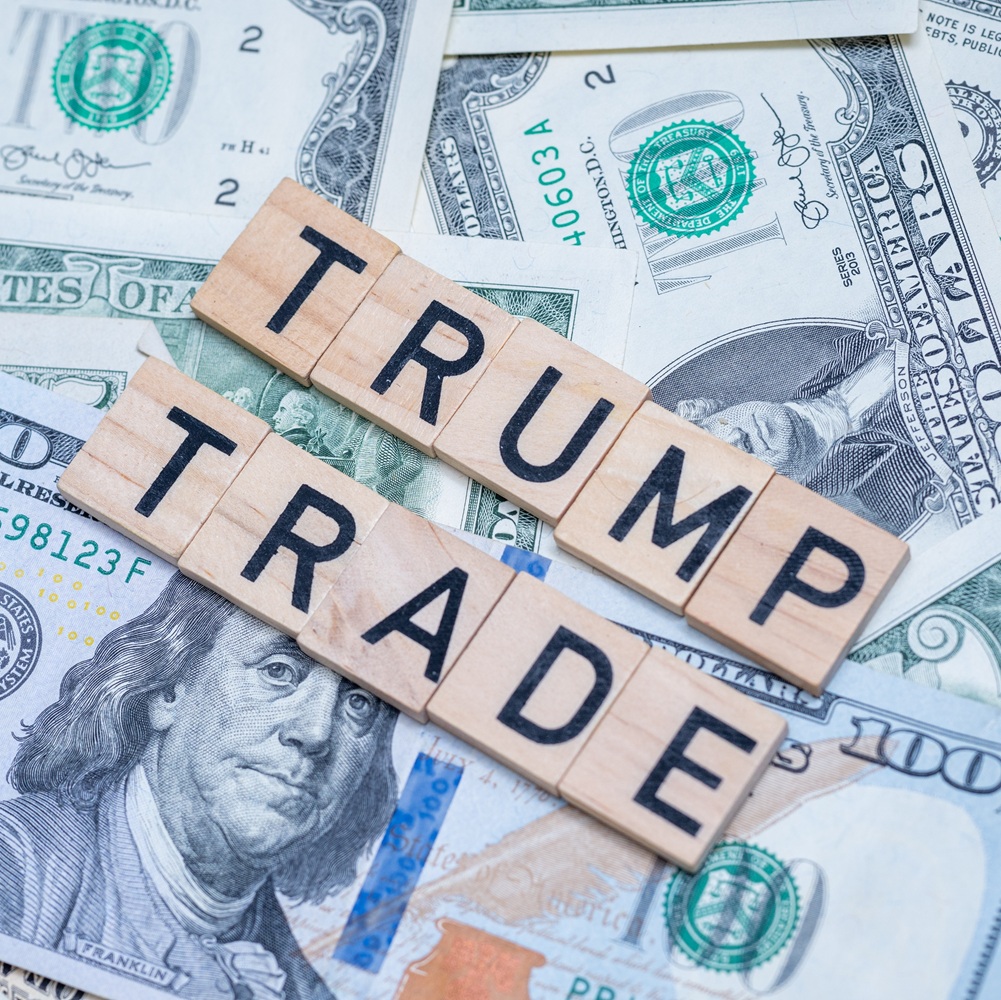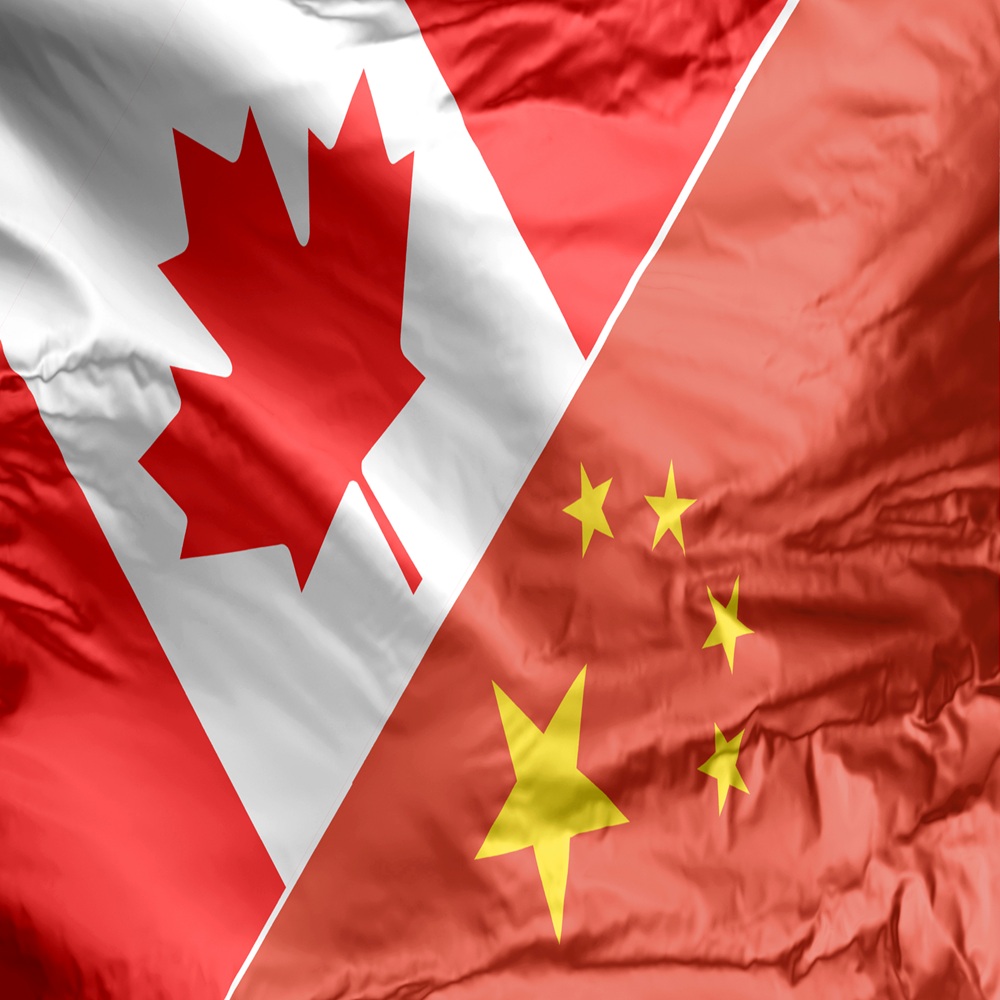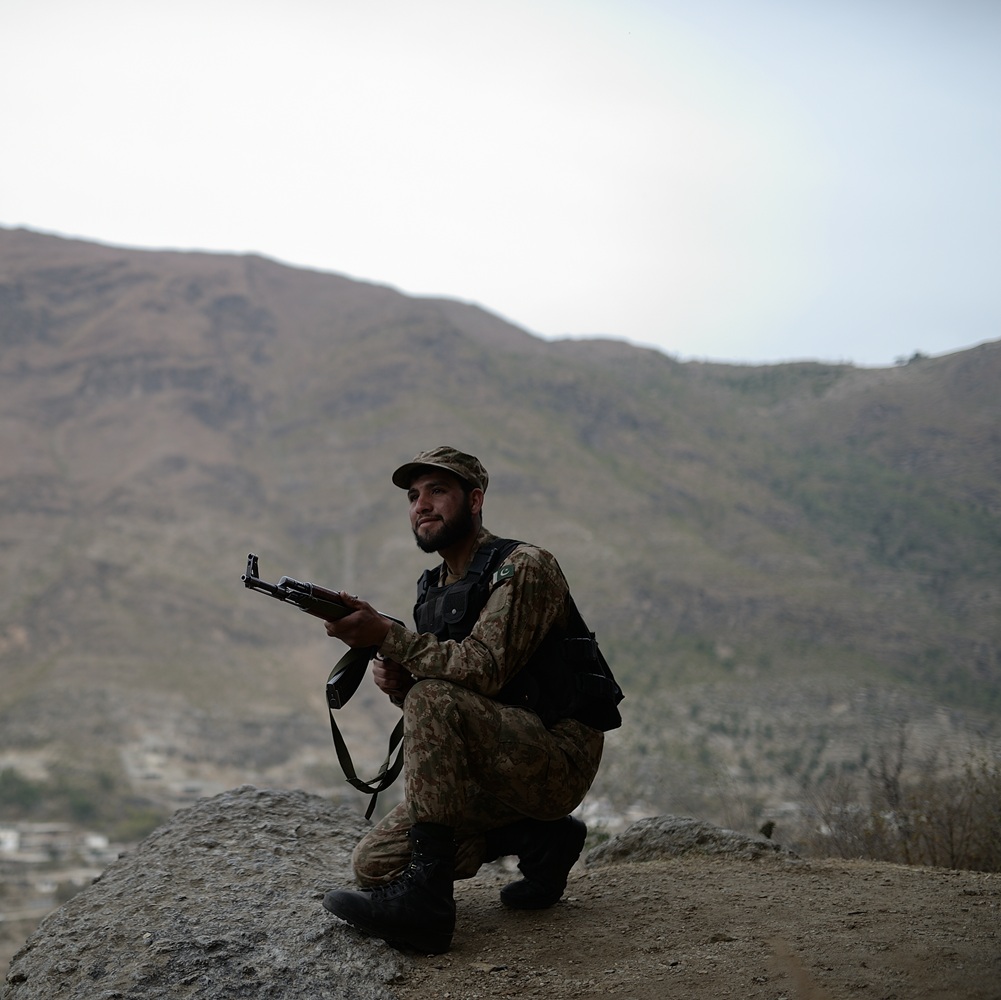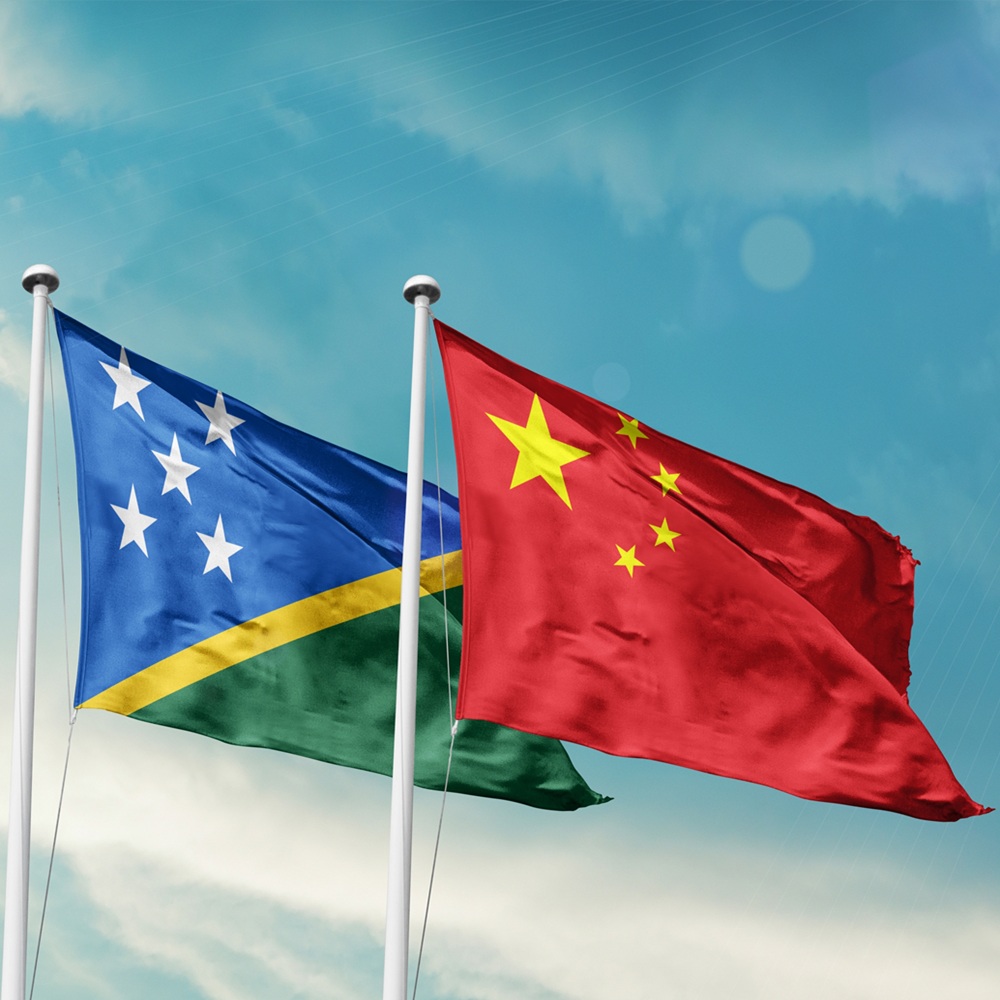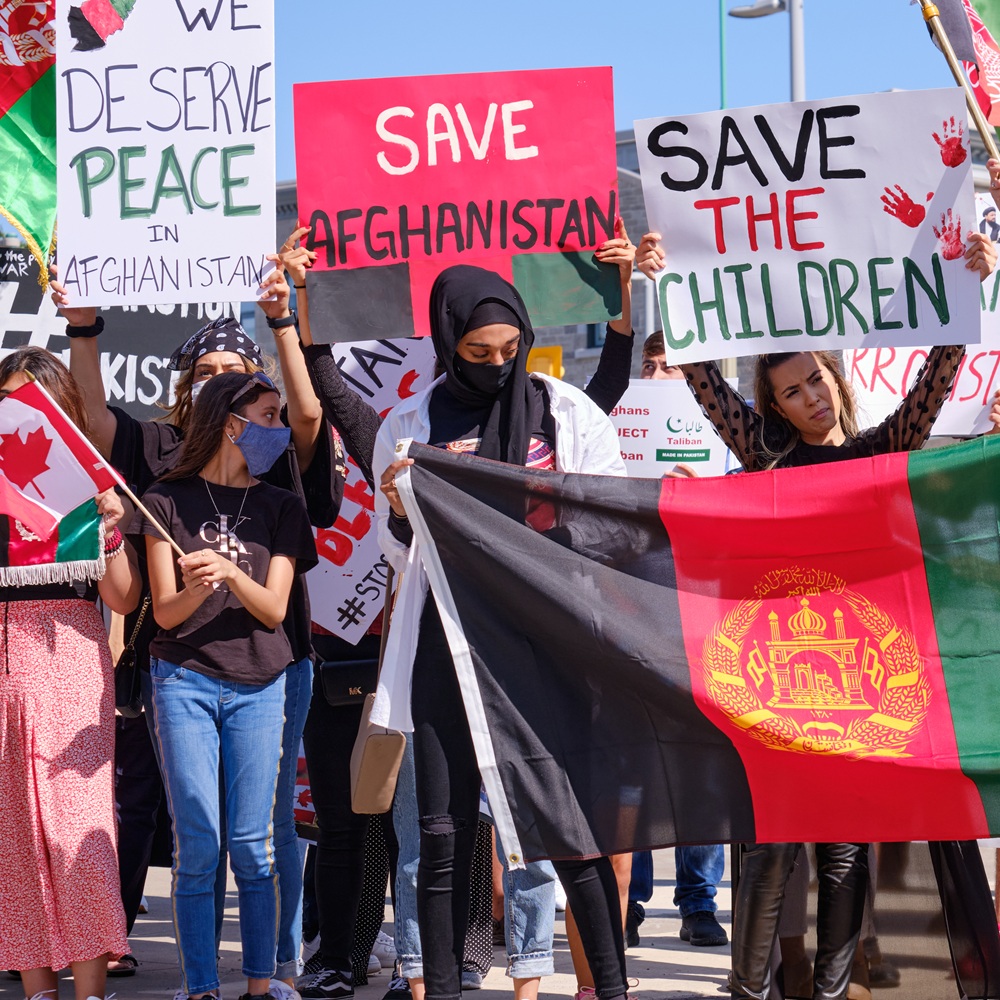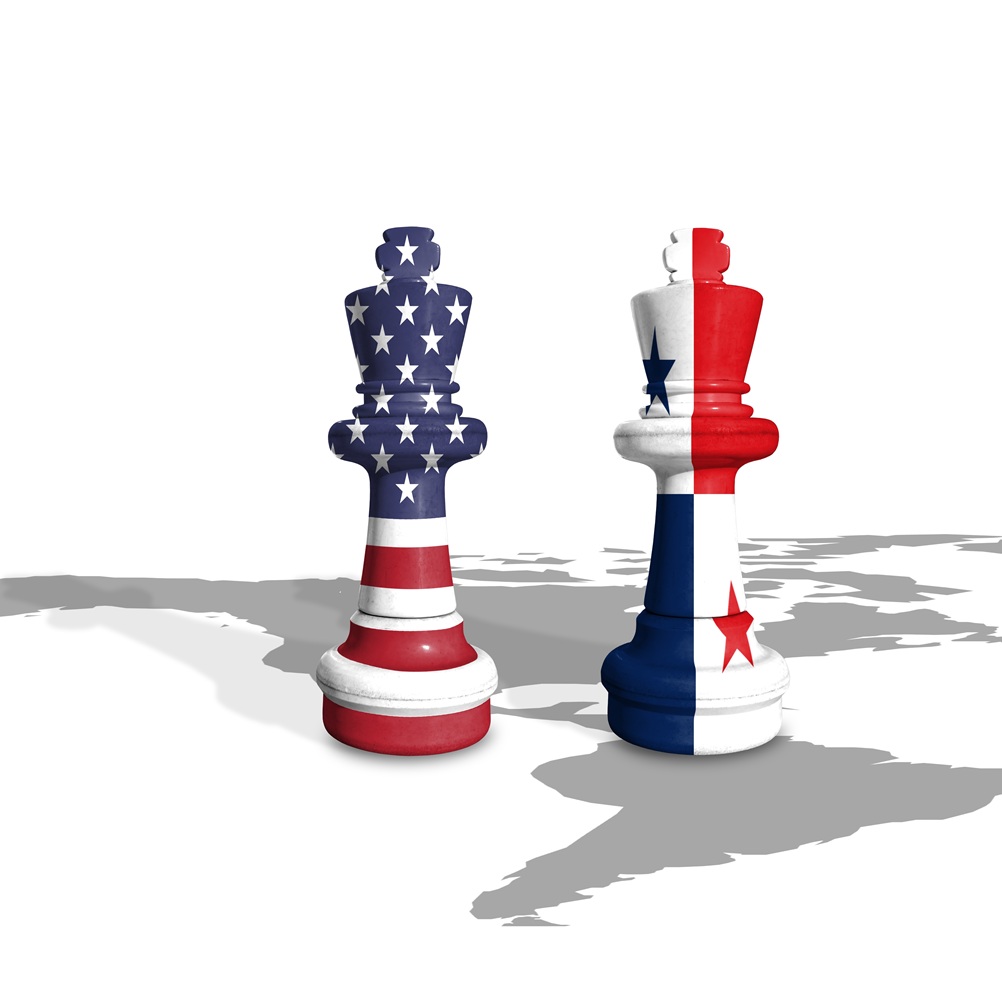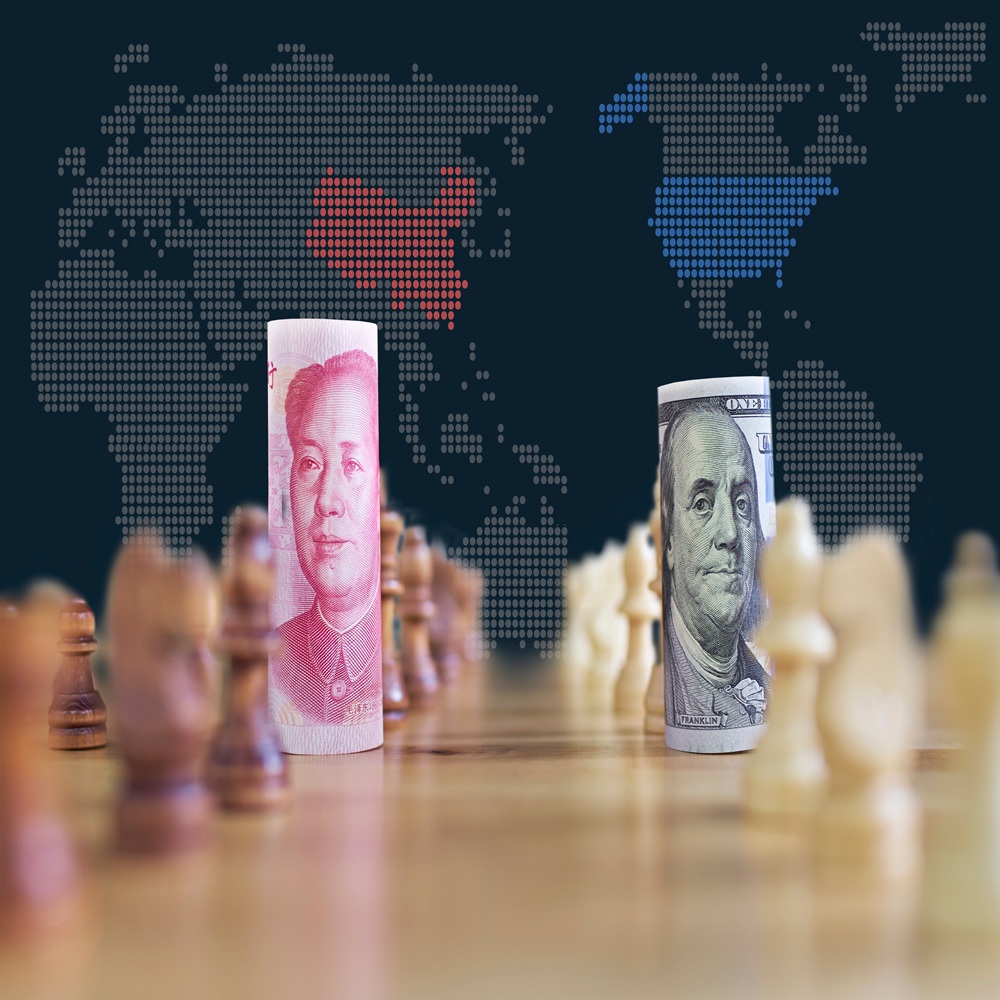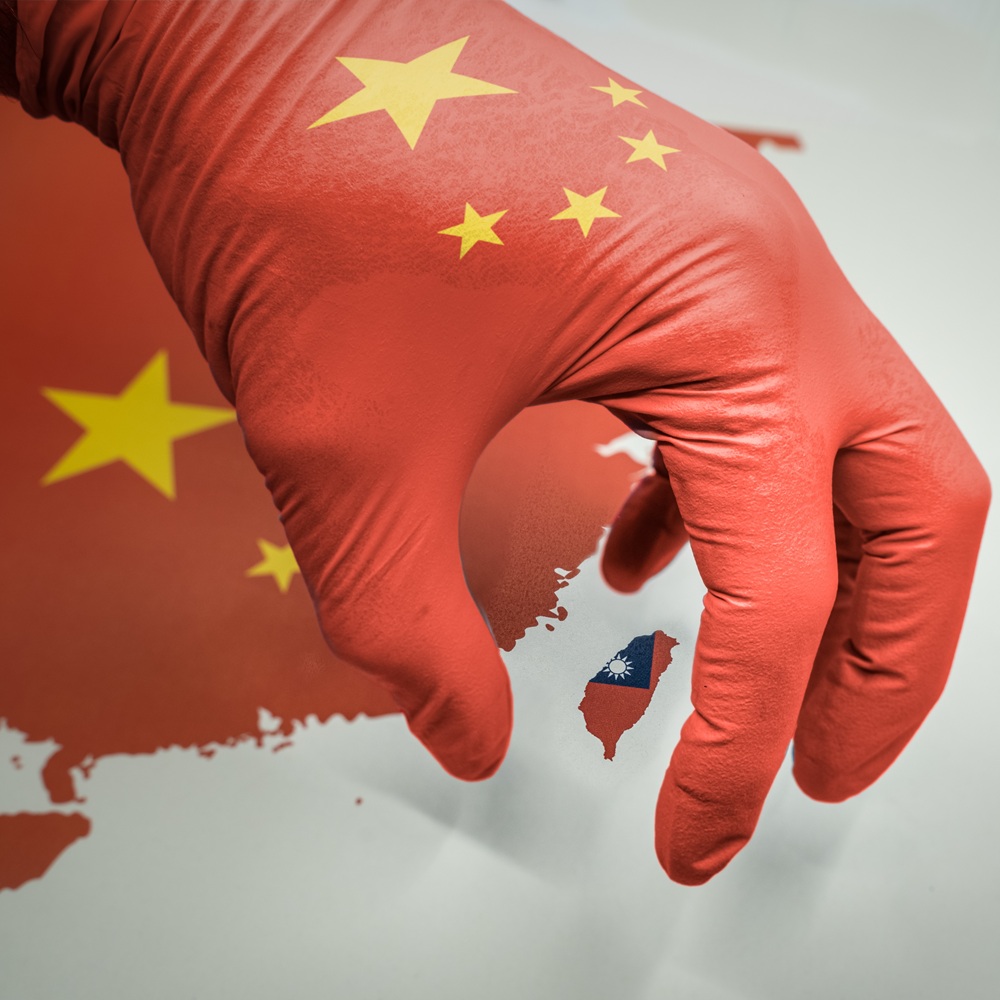
Forceful Taiwan Reunification: China’s Targeted Military and Civilian-Military Measures
by Suyash Desai
한국어로 읽기 Leer en español In Deutsch lesen Gap اقرأ بالعربية Lire en français Читать на русском This piece was originally published on March 11, 2025, by the Asia Program at the Foreign Policy Research Institute (FPRI). View the original publication on the FPRI website.https://www.fpri.org/article/2025/03/forceful-taiwan-reunification-chinas-targeted-military-and-civilian-military-measures/ Bottom Line China is systematically preparing for a forceful reunification campaign by redesigning and intensifying military and civilian-military measures such as military mobilization, amphibious capabilities, standardization of operations, and resource stockpiling. The People’s Liberation Army’s expanded and improved military exercises around Taiwan since August 2022 have been shifting toward more coercive and multi-domain operations to assert control over the region. These systematic and incremental military and civilian-military measures might provide China with the tools to successfully conduct a potential forceful reunification with Taiwan in the near future. For nearly a century, the People’s Republic of China (PRC) and Taiwan have largely avoided direct military confrontations across the Taiwan Strait. However, there have been four notable exceptions: the Taiwan Strait crises of 1954–55, 1958, 1995–96, and most recently, 2022–23. In the first three instances, the status quo was primarily restored following the crisis. However, recent events suggest worrying trends highlighting that Beijing is preparing for a forceful reunification with Taiwan. Chinese Communist Party (CCP) General Secretary Xi Jinping has already made reunification with Taiwan a part of his signature China Dream, announced during the 19th Party Congress meeting in 2017. However, this was not the first time Taiwan was featured prominently in speeches by top Chinese leaders. As political scientist Ketian Zhang highlights in her book China’s Gambit: The Calculus of Coercion, annexing Taiwan is considered a core interest of China, with official references to its significance appearing regularly since 2003. The most recent instance was Xi Jinping’s New Year’s speech on December 31, 2024, where he declared, “No one can stop the historical trend of reunification of the motherland” (誰也不能充實祖國統一的歷史大勢). But beyond rhetoric and political posturing, the Chinese People’s Liberation Army (PLA) has taken concrete measures over the past decade to advance Beijing’s reunification agenda. Since the COVID-19 pandemic, these measures have intensified, reinforcing China’s willingness to use force. This article highlights the PLA’s systematic and incremental military and civilian-military measures—capabilities that might provide China with the tools to successfully conduct a potential forceful reunification with Taiwan in the near future. These measures include changing the institutions and patterns of PLA mobilization, constructing and using civilian infrastructure in military exercises, and establishing a new status quo through increasingly coercive military exercises around Taiwan. They also include standardization of the PLA for greater efficiency, effectiveness, combat readiness, stockpiling resources, and re-enlisting veterans with specific skills. This article builds upon Oriana Skylar Mastro’s arguments in her piece “The Taiwan Temptation,” which contends that China’s expanding military capabilities and rising nationalism could drive Beijing to contemplate using force for reunification with Taiwan. It identifies granular military details, especially post-2020, but it doesn’t venture into arguments about the timing of the reunification, potential diplomatic backlash, or economic costs of the invasion. Recent Military-Civilian Measures Since 2015, the PRC has undertaken significant organizational, legal, and structural reforms to enhance the National Defense Mobilization System (NDMS) (國防動員系統). As China scholar Devin Thorne highlights in his recent testimony to the US-China Economic and Security Review Commission, NDMS enables the PRC to harness its political, economic, technological, cultural, social, and other civilian resources from peacetime to wartime. This helps China to address a wide range of threats, such as escalations on its border, domestic instabilities, natural disasters, and other crises. It also bolsters China’s military logistics. As Thorne highlights, the key developments include the enactment of the National Defense Transportation Law in 2017, the introduction of updated auditing and surveying data on natural resources protocols in 2018 and 2021, the establishment of new NDMS offices beginning in December 2022, the creation of a new type of highly trained and professional local militia force since 2021, and the enhancement of cross-militia training initiatives starting in 2024. The PLA can mobilize private and civilian resources through the NDMS during national emergencies. It highlights China’s determination to prepare for potential contingencies, including escalation activities on its borders with India, the Taiwan Strait, and the South China Sea. Lessons from the Russian-Ukrainian War and the Israeli-Palestinian conflict have further shaped these efforts. Once operational, the NDMS would ultimately allow the PRC to mobilize society and harness civilian and military resources more systematically and institutionally in case of a potential forceful reunification attempt with Taiwan. However, mobilizing resources and force is insufficient, as China would need to reach the other side of the Taiwan Strait during a potential escalation. Some scholars dismiss the idea that the PLA remains incapable of conducting amphibious operations at the scale needed to take control of Taiwan. Amphibious operations (landing assault) are one of the five most important campaigns (alongside anti-landing, island blockade, border area counter-attack, and counter–air-raid campaigns) discussed at length in the PLA’s first written doctrine on joint operations, Joint Campaign Outline, as operational requirements to take over Taiwan by force. Taiwan has 169,000 active military personnel, backed by 1.66 million reservists. As career naval officer Harlan Ullman explains, using the traditional three-to-one ratio of attackers to defenders taught at war colleges, the PLA would need to mobilize at least 507,000 soldiers. By extension, to cross the 106-kilometer-wide Taiwan Strait to conduct landing operations, China would need thousands of ships—far more than the current PLA Navy capabilities of 234 operating warships. However, China has long been working to mobilize its civilian infrastructure to support its military campaign. For instance, the PRC has emphasized the construction of roll-on/roll-off (RO-RO) (滾裝船) ships, which can use their power to set up ramps on docks or beaches to transport vehicles. Each RO–RO ship is estimated to carry at least three hundred vehicles and about fifteen hundred passengers. Since establishing the “strategic projection support ship fleets” in China’s major ship-building companies in 2012, the PLA has actively cooperated with local shipping companies to improve maritime “strategic delivery” capabilities by prioritizing the production of RO-RO ferries. According to naval strategist J. Michael Dahm, in January 2023, China had around thirty-one RO-RO ferries in operation. However, the Center for Strategic and International Studies pointed out that the mainland shipyards would deliver up to two hundred RO-RO ships in the four years from 2023 to 2026. Furthermore, the PLA has used these ferries in military exercises in the Taiwan Strait since 2019. For instance, the first fifteen-thousand-ton ferry, Bang Chui Dao RO-RO ship (棒槌島滾裝船), participated in an amphibious assault exercise in 2019. Since then, the PLA has conducted such military exercises regularly. In July 2020, the PLA experimented with launching amphibious assault craft from civilian ferries toward the beach rather than port facilities, and it conducted day and night exercises off the coast of Guangdong Province. August 2021 was the first time the PLA used a ten-thousand-ton–class civilian ferry ship to land military exercises. Furthermore, in August 2022, after then-Speaker of the House Nancy Pelosi visited Taiwan, six of these RO-RO ships, which are operated by the Bo Hai Ferry Group Company (渤海輪渡集團公司) and are affiliated with the PLA Maritime Militia 8th Transport Brigade (海上民兵第8運輸旅), headed south toward Xiamen—the closest point to Taiwan. The RO-RO ferries were used more frequently in cross-transportation military exercises in July and September 2023. Furthermore, it was also discovered in January 2025 that China is building at least five landing barges at the Guangzhou shipyard with unusually long road bridges that extend from the bow of the ship, which makes them relevant to amphibious landing operations. Although these vessels and barges are extremely susceptible to attacks from Taiwanese F-16s, warships, and submarines, they would be supported by the PLA Navy, PLA Air Force, and PLA Rocket Force. The Changing Nature of Coercion and Military Exercises around Taiwan On September 17, 2020, the Taiwanese Ministry of National Defense published its first real-time military update, documenting PLA incursions into Taiwan’s de facto air defense identification zone (ADIZ). As meticulously recorded by Ben Lewis and Gerald C. Brown, by January 2025, there had been approximately eight thousand PLA violations of the ADIZ, including multiple crossings of the median line. Notably, Chinese warplanes crossed the median line in 2019 for the first time since 1999. However, Nancy Pelosi’s August 2022 visit to Taiwan provided the PLA with a pretext to escalate its activities, culminating in multiple advanced military exercises conducted around Taiwan from all sides. Since August 2022, the PLA has conducted five large-scale military exercises around Taiwan. Most of them coincided with significant political events. For instance, the first military exercise in August 2022 followed Pelosi’s visit. This was succeeded by the inaugural PLA Joint Sword exercises in April 2023, coinciding with former Taiwanese President Tsai Ing-wen’s visit to the United States and her meeting with then-Speaker of the US House of Representatives Kevin McCarthy. Subsequent exercises included Joint Sword A in May 2024 and Joint Sword B in October 2024. These exercises aligned with the inauguration of President Lai Ching-te’s tenure and his National Day speech. The most recent military exercises, conducted in December 2024, were held shortly after President Lai Ching-te’s travels through the United States. Notably, President Lai did not engage with any major US leaders during his transit. However, the recent exercises display the opportunistic Chinese behavior of leveraging situations to establish a new normal through increasingly coercive activities in the Taiwan Strait. The Joint Sword A and B exercises and the December 2024 drills are particularly significant for understanding the evolution of China’s coercion pattern and the difference between China’s military posturing and its intentions in the Taiwan Strait. While the Joint Sword A and B drills were declared in advance and focused on anti-intervention and amphibious assault near Taiwan, recent December 2024 exercises intended to perform blockade, strategic deterrence, and anti-interventionism exercises. The latest exercises occurred across expanded locations like Fujian, Zhejiang, and the Western Pacific. Significantly, the December 2024 exercise, for the first time, witnessed all three of the PLA’s sea-facing theater commands—North, East, and South—jointly participating in an operation in the eastern waters of China, a key demand by the leadership to achieve multi-domain joint operations capabilities. Notably, these instances reveal that the Chinese leadership is keenly aware of the PLA’s pre-existing weaknesses, like amphibious assaults and anti-intervention operations, and has been pushing the PLA to address this gap gradually. They also leveraged elements of strategic deterrence and surprise while adhering to steps toward joint combat operations, a prerequisite for a forceful reunification. Geographically, these exercises extended beyond the Taiwan Strait to cover broader areas, including Fujian, Zhejiang, Shanghai, and the Western Pacific, indicating a shift toward controlling key maritime zones in the First Island Chain. Thus, with active participation from all major PLA services and the three sea-facing theater commands, and indulgence in numerous aspects of warfare targeted toward the PLA’s primary strategic direction—Taiwan—these exercises signalled a more nuanced and multi-layered operational focus. Multiple Standardizations within the PLA Over the past seven years, particularly in the post-pandemic period, China has prioritized comprehensive standardization of procedures with the PLA and its auxiliary support systems—non-combat systems and components that support and sustain military operations. PLA leadership has issued numerous directives to achieve uniformity across various domains, such as the construction of barracks, military equipment procurement, and the establishment of standardized military training grounds. These efforts are extended to standardizing resource allocation, engineering procurement, equipment support, logistical operations, medical services, communication infrastructure, cybersecurity systems, and intelligence gathering and analysis mechanisms. These initiatives highlight China’s attempt to enable standardization within the PLA’s military operations to enhance its overall efficiency, effectiveness, and combat readiness. Streamlining key processes, including operational logistics, equipment maintenance, and strategic communication networks, would help the PLA to accelerate achieving capabilities to perform multi-domain integrated joint operations. Standardization facilitates interoperability across services, theaters, and arms, resulting in seamless coordination among ground, naval, air, space, and cyber units. Developing these capabilities is a prerequisite for conducting multi-domain integrated joint operations, a requirement for forceful Taiwan reunification. They are also indicative of the PLA’s steps toward achieving operational readiness. It is particularly relevant in regional and near-regional escalations, such as those in the South China Sea and the Western Pacific Ocean, which could be possibilities during the Taiwan reunification campaign. Resource Stockpiling Resource stockpiling is an important indicator of a nation’s preparedness for a potential conflict. It involves the systematic accumulation of critical materials, energy reserves, food supplies, and industrial inputs essential during wartime. Such activities are often undertaken to ensure self-sufficiency, mitigate vulnerabilities, and maintain resilience in the face of potential embargoes, trade disruptions, or blockades. Agricultural economist Gustavo F.C. Ferreira highlights in his testimony to the US-China Economy and Security Review Commission that China has been significantly increasing its energy resource reserves, particularly coal, crude oil, and natural gas. The country has built an extensive storage capacity for crude oil, estimated to exceed 1.8 billion barrels, including strategic petroleum reserves and underground storage facilities. Additionally, he points out that China’s coal production has ramped up aggressively, with approval of expansion projects equivalent to the European Union’s annual coal production in just one year. He notes that beyond energy resources, the stockpiling extends to other critical areas such as food (grains and protein sources), strategic metals (rare earth, copper, and lithium), and technological components (semiconductors). These measures are supported by state policies to reduce China’s reliance on global markets and ensure continued operation during a conflict or escalation. Similarly, there are reports about China’s record 105.03-million-metric-ton import of soybeans in 2024. This marks a 6.5 percent increase from 2023. This surge is possibly due to China’s efforts to prepare for a contingency, particularly in anticipation of intensified trade tensions with the United States. Researcher Zongyuan Zoe Liu’s work highlights China’s strategies to shield its economy from potential Western sanctions by drawing lessons from sanctions imposed on Russia. She notes China’s attempt to increase economic and technological self-sufficiencies by immunizing its economy against sanctions and building financial resilience against potential sanctions by the United States. Re-enlistment of Veterans Since 2017, the PLA has notified several enlistment orders for veterans with specific skill sets. A key focus has been the integration of veterans into civil-military roles. This is supported by policies to re-enlist them in specialized units adhering to Xi’s stated and revealed military goals for the PLA. For instance, in the case of Taiwan-focused operations, the PLA’s re-enlistment efforts focus on operational readiness by re-enlisting veterans skilled in amphibious operations, cyber warfare, and missile systems. Since 2022, there has been an emphasis on integrating these veterans into critical roles, such as reserve forces, militia coordination, and rapid mobilization units. Beyond these six measures, several other developments—China’s heavy investment in dual-use infrastructure such as ports and airfields on the east coast, development of amphibious and airborne military capabilities like the large Type 075 landing ships and Y-20 aircraft, investment in offensive intelligence and cyber capabilities, deployment of strategic missile systems like the DF-15 and DF-21, training of the maritime militia with the PLA and their expansion to support the armed forces whenever required, and the integration of real-time battlefield awareness via the BeiDou navigation system—are additional factors to conclusively determine the PLA’s intention and readiness for a potential reunification campaign with Taiwan. Conclusion It is a political decision to pursue the reunification campaign. Western scholars dismiss such arguments on the basis of the PLA’s perceived lack of military preparedness and the significant economic costs China would incur during and after a reunification attempt. However, as this essay highlights, China is keenly aware of these considerations and is taking proactive steps to limit the fallout, if not eliminate it. This essay doesn’t argue whether China would attempt a forceful unification campaign or the cost of its campaign. Instead, it argues that through a combination of military and civilian measures, an effort has been made to address the possible critical vulnerabilities in military and economic sectors. The question remains about the PLA’s ability to execute and sustain complex cross-strait operations, especially after targeted military purges in 2023 and 2024. Every measure mentioned here can be seen in isolation and not as a part of a complex puzzle that indicates that the PLA is preparing to invade Taiwan. However, these measures involve systemic integration with military logistics, enabling rapid deployment and sustainability when required. A steady accumulation of capabilities indicates deliberate preparation for eventualities that may align with China’s political-military objectives across the Taiwan Strait.









